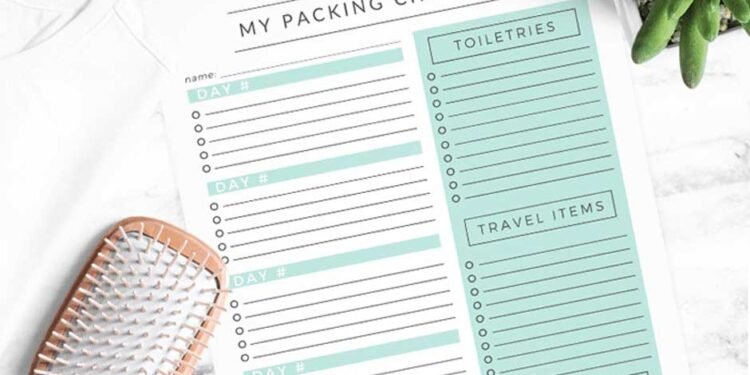Though it seems like a minor concern, running out of boxes or tape amidst moving day can actually turn into a disaster.
Fortunately, you can avoid these mistakes and guarantee a seamless transfer from one house to another by establishing and maintaining a neat checklist.
Let’s explore a packing supplies checklist that will not only ensure that you have covered all the basics but also help simplify your relocation.
Moving Boxes Delivery: The Lifeblood of Every Move
Every move revolves around these. From little boxes suited for books and kitchenware to big ones ideal for big, light objects like bedding or clothing, they come in many sizes.
Plan your relocation in a way that your moving box delivery is done well in advance to prevent last-minute anxiety.
So, which boxes are used for what?
- Small boxes are for heavier objects such as books, canned food, and kitchen tools;
- Medium ones are for electronics, pots, and pans;
- Large-sized boxes are for lighter goods, including towels, clothing, and cushions;
- Wardrobe boxes let you easily move clothing straight from hangers to the box, free from concern for creasing or wrinkling.
Having enough boxes on hand is vital, but so is having the correct ones. Therefore, depending on your inventory, try to predict how many of each size you will require.
Always order a few more, just in case. It’s better to have a few extras than to search frantically on a moving day.
Bubble Wrap, Packing Paper, and Cushioning
Protect your belongings during the move. Don’t forget fragile items on shelves or in cabinets. Proper packing saves headaches, after all.
For breakable objects like glassware, pottery, and electronics, bubble wrap is the best option. It is simple to use and provides good cushioning to protect fragile parts.
For items that don’t need as much padding—like plates, picture frames, or small appliances—packing paper is a fantastic alternative. It’s less bulky than bubble wrap but still provides enough protection.
Don’t forget about other cushioning materials, especially for filling those awkward empty spaces in your boxes. To cover big goods like appliances and furniture, use blankets and old towels.
This is both economical and environmentally beneficial. It also makes packing easier and helps keep your belongings safe.
Packing will be much simpler, and your valuables will be safer during the transfer if you have these supplies on hand.
Packing Tape and Labelling Tools
Search for heavy-duty packing tape meant especially for moving boxes. Don’t cut corners on quality here. The last thing you want is boxes opening while being transported.
Labelling is also really useful. Prepare to label every box and get a few thick, multicoloured markers.
Be as detailed as possible. Rather than merely writing “kitchen,” write “kitchen – cutlery and plates,”. Do the same for the bathroom. It should be written as “bathroom – toiletries.”
This will enable movers to know where to put every box when they reach your new home.
Mark various rooms with coloured label stickers and add “delicate” labels. On moving day, these preparations will make all the difference.
Utility Knives and Scissors
Utility knives are ideal for precise cuts on heavy-duty materials like thick cardboard, packing tape, or bubble wrap. They’re particularly useful for resizing boxes or opening packages quickly and cleanly.
Choose a retractable utility knife with a comfortable grip for safety and ease of use. Meanwhile, scissors are perfect for lighter tasks like trimming, packing paper or cutting tape. A sturdy pair of all-purpose scissors with sharp blades is a must-have for various cutting needs.
To make packing and unpacking more convenient, keep multiple pairs of scissors and at least one utility knife in different areas of your home. This way, you’re never left scrambling to find a tool when you need it most.
Furniture Covers and Mattress Bags
The last thing you want is to arrive at your new house with a sofa covered in dust. Here is where mattress bags and furniture covers save the day.
Usually composed of plastic or a thick cloth, furniture covers are meant to guard against scratches, dirt, and possible damage during the relocation. Professional movers can make these available as part of their service as well.
Mattress bags and furniture covers are also used if you need to keep your furniture in storage for a certain period of time.
Moving Dollies and Straps
Moving dollies and straps are irreplaceable when relocating either homes or offices. While moving straps give extra support for transporting awkward or heavy objects, a dolly lets you quickly move big boxes, appliances, or furniture without hurting your back.
If you do it yourself, make sure you have these tools. Alternatively, use professional movers, and they’ll bring their own pro tools.
Making Sure Everything is Delivered on Time
It’s critical to arrange your moving boxes delivery and make sure all of your packing materials are delivered on schedule.
Early ordering of your materials will help prevent last-minute delays. Plan appropriately since demand for moving boxes and supplies could surge during busy times, such as summer or bank holidays.
You can also ask the company you’re buying supplies from for an opinion on how many boxes and what kinds you will need.
Conclusion
Moving can be stressful. So, gather all the necessary supplies upfront. Examples include appropriately sized boxes, protective materials, and tools.
Don’t forget to plan ahead. Order extras and label everything meticulously. Whether you’re using professionals or tackling the move yourself, having these essentials ready will help you transition to your new home smoothly.












